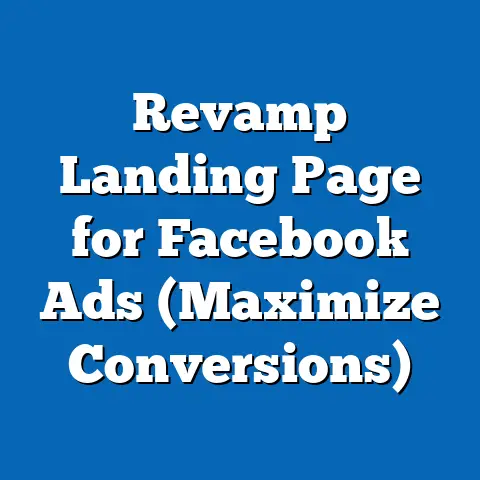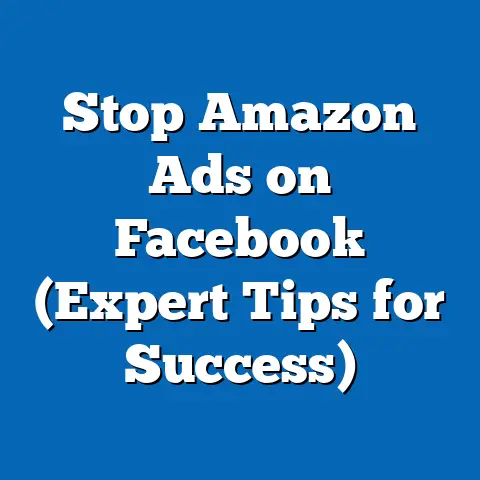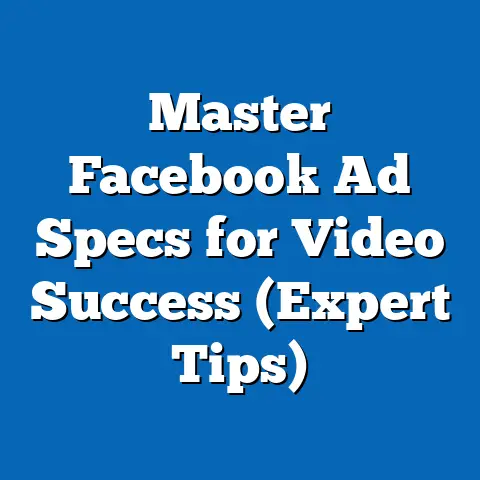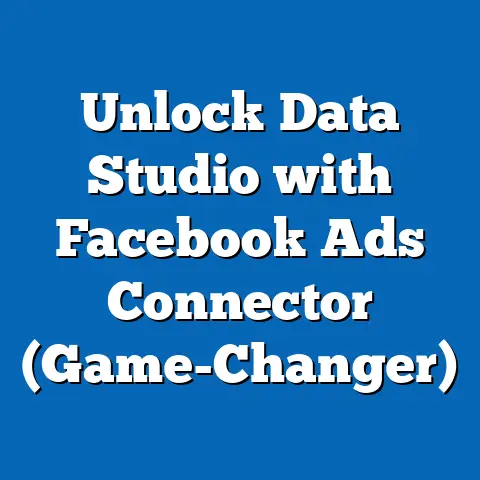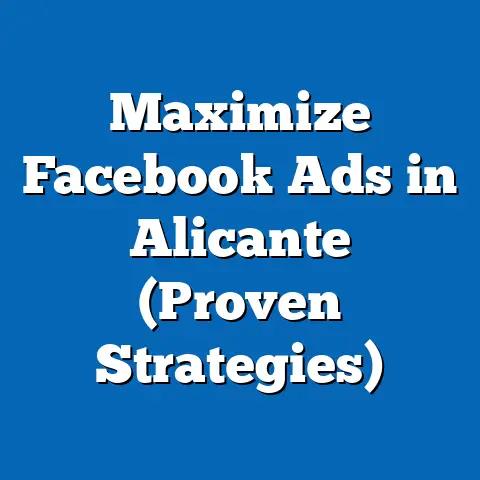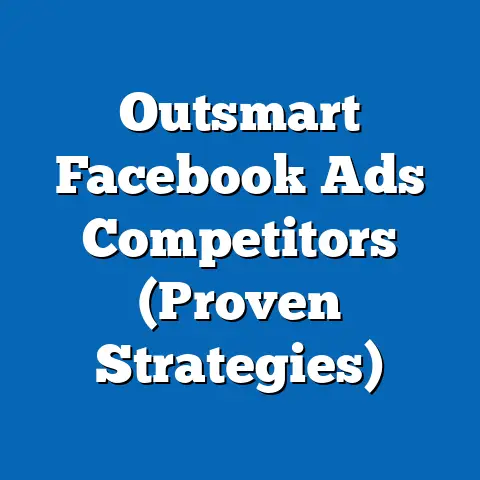Maximize Lite Download Facebook Strategy (Pro Tips)
In a world where every click counts and every download can make or break your app, are you still relying on outdated Facebook ad strategies? I’ve seen it happen time and time again: businesses pouring money into Facebook ads, only to see lackluster results. The problem often isn’t the product itself, but the approach to advertising it. Especially when it comes to reaching audiences in emerging markets, a one-size-fits-all approach simply won’t cut it. That’s where Facebook Lite comes in.
Facebook Lite is a game-changer, offering a streamlined experience for users with limited bandwidth and older devices. But simply advertising on Facebook Lite isn’t enough. You need a tailored strategy, a nuanced understanding of your audience, and the right tools to make your campaigns sing.
This isn’t just about throwing money at ads and hoping for the best. This is about crafting a laser-focused strategy that understands the unique needs and preferences of Facebook Lite users. I’m going to guide you through actionable pro tips that can transform your Facebook ads, turning them from a cost center into a powerful engine for driving Lite downloads and, ultimately, growing your business.
Section 1: Understanding Facebook Lite
Facebook Lite is more than just a smaller version of the Facebook app. It’s a strategic move by Meta to connect with users in areas where internet connectivity is slow, data is expensive, and older smartphones are common. It’s a lightweight app designed to use less data and work well on 2G networks, making it a crucial tool for reaching audiences in developing countries and rural areas.
Imagine trying to load a data-heavy Facebook feed on a sluggish 2G connection. Frustration levels would skyrocket, and users would quickly abandon the app. Facebook Lite solves this problem by offering a simplified, data-efficient experience.
Who Uses Facebook Lite?
The primary user base of Facebook Lite consists of individuals in emerging markets, particularly in Asia, Africa, and Latin America. These users often have:
- Limited Internet Connectivity: They rely on 2G or 3G networks, which are significantly slower than the 4G or 5G connections common in developed countries.
- Data Constraints: Data plans can be expensive, making users highly conscious of data consumption.
- Older Devices: They often use older smartphones with limited processing power and storage.
According to Statista, as of 2023, Facebook Lite has millions of active users, with significant adoption in countries like India, Indonesia, and Nigeria. These regions represent massive potential markets for businesses, but reaching them effectively requires understanding their unique needs and preferences.
Why This Matters for Advertisers
Understanding the Facebook Lite user base is critical for crafting effective ad campaigns. Here’s why:
- Relevance: Generic ads that are not optimized for low-bandwidth environments are likely to be ignored or even cause frustration.
- Cost Efficiency: Targeting the right audience with the right message can significantly reduce wasted ad spend.
- Market Penetration: Facebook Lite provides a unique opportunity to reach a large and growing user base in emerging markets that may be otherwise inaccessible.
I remember working with a mobile gaming company that initially struggled to gain traction in India. They were running the same high-resolution video ads they used in North America, which were slow to load and consumed a lot of data. After analyzing their data, we realized that a significant portion of their target audience was using Facebook Lite. We then redesigned their ads to be simpler, with smaller file sizes and more concise messaging. The result? A dramatic increase in downloads and a significant reduction in their cost per acquisition.
Key Takeaway: To effectively target Facebook Lite users, you need to understand their specific needs and limitations. This means optimizing your ads for low-bandwidth environments, crafting concise and relevant messaging, and targeting your campaigns strategically.
Section 2: Crafting the Perfect Ad
Creating an effective Facebook ad for Lite users is an art form. It requires striking a balance between visual appeal, concise messaging, and a compelling call to action, all while keeping data consumption to a minimum.
Visuals: Keep It Simple, Keep It Fast
In the world of Facebook Lite, less is definitely more. Forget about high-resolution images and elaborate animations. Instead, focus on visuals that are:
- Clear and Concise: Use images that are easy to understand at a glance.
- Small File Size: Optimize your images to reduce file size without sacrificing quality. Tools like TinyPNG or ImageOptim can help you compress images without noticeable loss of detail.
- Relevant: Ensure your visuals are directly related to your product or service and resonate with your target audience.
I once worked with a travel agency that was advertising vacation packages to Southeast Asia. Their initial ads featured stunning panoramic photos of exotic beaches, but they were too large and slow to load for Facebook Lite users. We replaced these with simpler, brightly colored illustrations of key attractions, along with a clear and concise value proposition. The result was a significant improvement in click-through rates and a lower cost per click.
Copywriting: Get to the Point
Facebook Lite users are often on the go and have limited attention spans. Your ad copy needs to be:
- Concise: Use short, impactful sentences that get straight to the point.
- Benefit-Oriented: Focus on the benefits of your product or service, rather than just its features.
- Culturally Relevant: Tailor your messaging to resonate with the local culture and language of your target audience.
Avoid jargon, technical terms, and overly complex language. Instead, use simple, everyday language that everyone can understand.
Call to Action (CTA): Make It Irresistible
Your call to action is the final push that encourages users to download your app. It needs to be:
- Clear and Direct: Tell users exactly what you want them to do (e.g., “Download Now,” “Get Started,” “Learn More”).
- Compelling: Highlight the value proposition of your app and why users should download it.
- Prominent: Make your CTA button stand out with a contrasting color and a clear, easy-to-read font.
Experiment with different CTAs to see which ones perform best. A/B testing can help you identify the most effective wording and design for your audience.
Examples of Successful Ads
Let’s look at some examples of ads that have nailed the Facebook Lite strategy:
- Jumia (e-commerce): Simple, brightly colored images of popular products, combined with a clear call to action (“Shop Now”) and a limited-time discount.
- Opera Mini (web browser): A concise message highlighting the browser’s data-saving capabilities, combined with a visually appealing logo and a clear “Download” button.
- Mobile Legends (mobile game): Short, action-packed video clips showcasing the game’s key features, combined with a compelling call to action (“Install Now”) and a limited-time bonus for new players.
Key Takeaway: Crafting the perfect ad for Facebook Lite users requires a focus on simplicity, relevance, and a clear call to action. Optimize your visuals for low-bandwidth environments, write concise and benefit-oriented copy, and make your CTA irresistible.
Section 3: Targeting Strategies to Maximize Downloads
Even the most brilliantly crafted ad will fall flat if it’s not shown to the right audience. Effective targeting is the key to maximizing your Lite downloads and ensuring that your ad spend is used wisely.
Demographic Targeting: Know Your Audience
Facebook’s demographic targeting options allow you to reach specific groups of people based on:
- Age: Target users within a specific age range that aligns with your app’s target demographic.
- Location: Focus your ads on countries or regions where Facebook Lite is most popular.
- Interests: Target users who have shown interest in topics related to your app (e.g., gaming, education, e-commerce).
Don’t make assumptions about your target audience. Use Facebook’s Audience Insights tool to gather data and refine your targeting strategy.
Lookalike Audiences: Expand Your Reach
Lookalike audiences allow you to reach new users who are similar to your existing customers. You can create lookalike audiences based on:
- Website Visitors: Target users who have visited your website or landing page.
- App Users: Target users who have already downloaded your app.
- Email Lists: Upload your email list to Facebook and create a lookalike audience based on your subscribers.
Lookalike audiences are a powerful tool for expanding your reach and finding new users who are likely to be interested in your app.
Retargeting: Bring Them Back
Retargeting allows you to show ads to users who have previously interacted with your app or website. You can retarget users who:
- Visited Your App Store Page: Remind them of your app and encourage them to download it.
- Added Items to Their Cart But Didn’t Purchase: Offer them a discount or incentive to complete their purchase.
- Uninstalled Your App: Ask them for feedback and encourage them to reinstall it.
Retargeting is a highly effective strategy for driving conversions and maximizing ROI.
Case Studies and Statistics
- A study by Facebook found that using lookalike audiences can increase ad reach by up to 30% while maintaining a similar conversion rate.
- A case study by a mobile gaming company showed that retargeting users who had uninstalled their app resulted in a 15% increase in reinstallations.
Key Takeaway: Effective targeting is essential for maximizing your Lite downloads. Use Facebook’s demographic targeting options to reach specific groups of people, create lookalike audiences to expand your reach, and retarget users who have previously interacted with your app or website.
Section 4: Budgeting and Bidding Techniques
Setting the right budget and bidding strategy is crucial for maximizing your ROI on Facebook ads. You need to strike a balance between reaching a large audience and keeping your costs under control.
Setting Your Budget
There’s no one-size-fits-all answer to the question of how much to spend on Facebook ads. The ideal budget depends on factors like:
- Your Target Audience: Reaching a larger audience will require a larger budget.
- Your Goals: If you’re aiming for a high volume of downloads, you’ll need to spend more than if you’re just trying to increase brand awareness.
- Your Bidding Strategy: Different bidding strategies have different cost implications.
A good starting point is to set a daily budget based on your overall marketing budget and your desired ROI. Monitor your performance closely and adjust your budget as needed.
Bidding Strategies
Facebook offers several bidding strategies to choose from:
- Cost Per Click (CPC): You pay each time someone clicks on your ad. This is a good option if you’re focused on driving traffic to your website or app store page.
- Cost Per Impression (CPM): You pay for every 1,000 times your ad is shown. This is a good option if you’re focused on increasing brand awareness.
- Cost Per Acquisition (CPA): You pay each time someone takes a desired action, such as downloading your app. This is a good option if you’re focused on driving conversions.
The best bidding strategy for you will depend on your goals and your target audience. Experiment with different strategies to see which one performs best.
Monitoring and Adjusting Bids
It’s important to monitor your ad performance closely and adjust your bids as needed. If you’re not getting the results you want, try:
- Increasing Your Bid: This will increase your chances of winning ad auctions and reaching a larger audience.
- Lowering Your Bid: This will reduce your costs, but it may also reduce your reach.
- Adjusting Your Targeting: Make sure you’re targeting the right audience for your app.
Key Takeaway: Setting the right budget and bidding strategy is crucial for maximizing your ROI on Facebook ads. Start with a daily budget based on your overall marketing budget and your desired ROI, experiment with different bidding strategies, and monitor your performance closely and adjust your bids as needed.
Section 5: Measuring Success and Optimization
Measuring the success of your Facebook Lite download campaigns is essential for understanding what’s working and what’s not. By tracking key performance indicators (KPIs) and continuously optimizing your campaigns, you can maximize your ROI and drive even more downloads.
Key Performance Indicators (KPIs)
Some of the most important KPIs to track for Facebook Lite download campaigns include:
- Click-Through Rate (CTR): The percentage of people who click on your ad after seeing it. A high CTR indicates that your ad is relevant and engaging to your target audience.
- Conversion Rate: The percentage of people who download your app after clicking on your ad. A high conversion rate indicates that your app store page is optimized for conversions.
- Cost Per Acquisition (CPA): The cost of acquiring a new user through your Facebook ads. A low CPA indicates that your campaigns are cost-effective.
- Return on Ad Spend (ROAS): The revenue generated by your Facebook ads divided by the amount you spent on them. A high ROAS indicates that your campaigns are generating a good return on investment.
- User Engagement: Track metrics like daily active users (DAU), monthly active users (MAU), and session length to understand how users are engaging with your app after downloading it.
A/B Testing
A/B testing involves creating two versions of your ad (A and B) and showing them to different segments of your audience. By comparing the performance of the two versions, you can identify which one is more effective.
You can A/B test different elements of your ad, such as:
- Visuals: Test different images or videos to see which ones resonate best with your audience.
- Copy: Test different headlines, descriptions, and calls to action to see which ones drive the most clicks and conversions.
- Targeting: Test different targeting options to see which audiences are most likely to download your app.
Continuous Optimization
Optimization is an ongoing process. You should continuously monitor your ad performance, analyze your data, and make adjustments to your campaigns as needed.
Some tips for continuous optimization include:
- Refine Your Targeting: Continuously refine your targeting based on the data you collect.
- Experiment with New Creatives: Regularly test new visuals and copy to keep your ads fresh and engaging.
- Monitor Your Bids: Continuously monitor your bids and adjust them as needed to maximize your ROI.
Key Takeaway: Measuring success and optimization are essential for maximizing your ROI on Facebook Lite download campaigns. Track key performance indicators, conduct A/B testing, and continuously optimize your campaigns based on your data.
Conclusion
You’ve journeyed through the world of Facebook Lite, understanding its unique audience, crafting the perfect ad, mastering targeting strategies, and learning the art of budgeting and bidding. You now have a roadmap for measuring success and continuously optimizing your campaigns.
The power of a well-optimized Facebook ads strategy focused on Lite downloads is immense. It’s the key to unlocking new markets, reaching untapped audiences, and driving significant growth for your business.
Don’t let your competition outpace you—start implementing these pro tips today and watch your Lite downloads soar! The world of Facebook Lite awaits, and with the right strategy, you can conquer it. Now, go forth and advertise!

